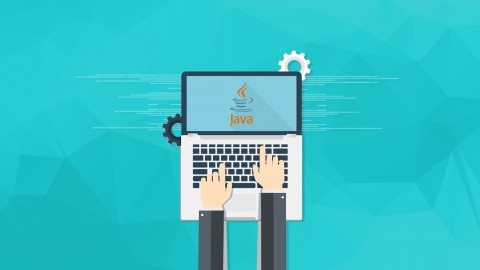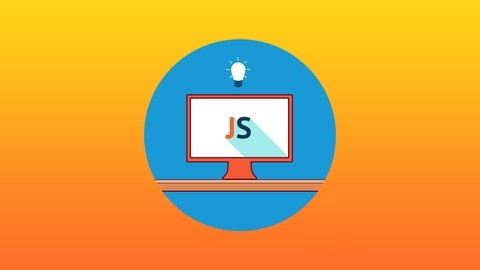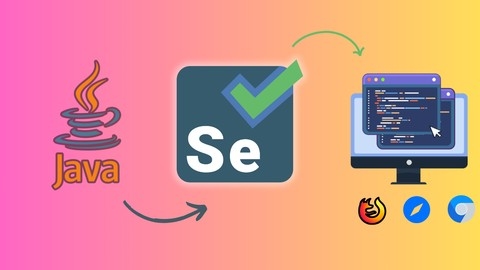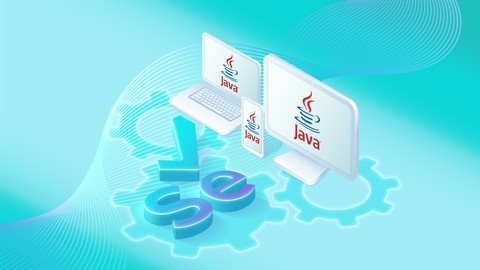Advanced Java programming delves into the more intricate aspects of Java, extending beyond the basics to cover topics like concurrency, networking, and generics.
It empowers developers to build robust, high-performance applications, handle complex data structures, and work with various APIs and frameworks.
By mastering advanced Java concepts, you can tackle challenging projects, optimize code for efficiency, and significantly enhance your career prospects in software development.
Finding the perfect advanced Java course on Udemy can be a bit of a puzzle, given the sheer number of options available.
You’re looking for a course that not only covers advanced concepts but also provides practical examples, hands-on exercises, and clear explanations to help solidify your understanding.
Based on our research, the best advanced Java course overall on Udemy is Advanced Selenium WebDriver with Java and TestNG.
This course provides a deep dive into Selenium WebDriver, a powerful tool for automating web browser interactions, combined with the robust testing framework TestNG.
This combination makes it ideal for those looking to master automated testing in Java.
While Advanced Selenium WebDriver with Java and TestNG is our top recommendation, we understand that you might be looking for something different.
So, we’ve compiled a list of other excellent advanced Java courses on Udemy, catering to various learning styles and specific interests.
Read on to discover the perfect course to elevate your Java skills.
Advanced Selenium WebDriver with Java and TestNG
This course takes you from a basic understanding of Selenium to an advanced level.
You begin by refining your existing Selenium framework, learning how to structure it efficiently using packages and Log4j for clear and organized logging.
You then dive into the Page Object Model (POM), learning to create, use, and extend Page Objects with PageFactory.
This helps you organize your code, making it easier to maintain and update.
You’ll also explore inheritance and component reuse within your POM, building a scalable and robust framework.
Next, you’ll master advanced interactions with web elements.
This includes handling checkboxes, radio buttons, dropdowns, alerts, and iframes.
You’ll learn to manage multiple windows and tabs, simulate key presses, and upload files.
You’ll even learn to use the JavaScriptExecutor for complex actions like scrolling, drag-and-drop operations, hover effects, and manipulating sliders.
These techniques prepare you for the challenges of real-world web applications.
The course then introduces data-driven testing with TestNG.
You’ll learn how to use TestNG parameters and DataProviders to run your tests with various data sets, either from static data or external sources like CSV files and spreadsheets.
This powerful approach helps you test different scenarios efficiently, maximizing your test coverage.
You’ll then explore advanced Selenium techniques, such as soft asserts for continuing tests even after failures, capturing screenshots for debugging, and collecting JavaScript errors for a complete picture of your application’s behavior.
You’ll learn to use TestNG listeners for detailed test reports and manage browser cookies and profiles for precise control over your test environment.
You’ll also discover how to test hybrid mobile apps and leverage the speed and efficiency of headless browsers.
This gives you the advanced tools you need to tackle complex testing scenarios.
Advanced Algorithms (Graph Algorithms) in Java
This course takes you on a deep dive into the world of advanced algorithms in Java, focusing specifically on graph algorithms.
You’ll begin with the basics of graph theory, understanding how to represent graphs using adjacency matrices and adjacency lists.
This foundation is essential for everything that follows.
You’ll then explore graph traversal algorithms like Breadth-First Search (BFS) and Depth-First Search (DFS).
You’ll even apply BFS to build a web crawler, much like how search engines work.
DFS will be your tool to solve maze problems, demonstrating the practical power of these algorithms.
The course then ramps up the complexity, introducing you to topological ordering, which you can use to schedule tasks based on their dependencies.
You’ll also learn how to detect cycles in graphs, a crucial skill for many applications.
From there, you’ll delve into shortest path algorithms, including Dijkstra’s algorithm and the Bellman-Ford algorithm.
You’ll tackle real-world challenges like finding the longest path in a project network and even simulating arbitrage situations in foreign exchange markets.
You’ll also explore minimum spanning tree algorithms, such as Kruskal’s and Prim’s algorithms, understanding how to optimize networks for efficiency.
Next, you’ll uncover the secrets of strongly connected components using Kosaraju’s and Tarjan’s algorithms, valuable for analyzing complex networks like social media connections.
The course then covers the maximum flow problem, using the Ford-Fulkerson algorithm to determine the maximum flow through a network, like pipes or roads.
Finally, you’ll grapple with classic graph problems like the Traveling Salesman Problem (TSP) and the Chinese Postman Problem, learning about Hamiltonian and Eulerian cycles.
Throughout the journey, you’ll refine your Java skills by implementing each algorithm in Java.
A complexity theory crash course ensures you understand the efficiency of your code.
Advanced Java Programming
This advanced Java course takes you on a journey from foundational concepts to sophisticated development techniques.
You begin with generic programming, building adaptable components that work with various data types.
You’ll construct generic classes, interfaces, and methods, giving you a flexible coding style.
This leads directly into exploring collections, where you’ll manage data effectively with ArrayLists, HashSets, and TreeMaps.
You’ll also learn about interfaces like List, Set, and Map, essential tools for any Java developer.
You then move into classic data structures like stacks, queues, and binary trees, applying sorting algorithms like mergesort and quicksort, and searching algorithms like binary search to optimize your code.
You’ll also discover how to handle exceptions gracefully using try-catch blocks, ensuring your programs run smoothly.
From there, you connect to databases with JDBC, interacting with MySQL to query and manage data.
You’ll even build network applications using sockets, creating client-server communication.
You’ll then create interactive applications with Swing, designing user interfaces with buttons, text fields, and other components.
You’ll explore multithreading, making your programs more responsive by handling multiple tasks concurrently.
You then transition into more specialized areas like Java Applets, web applications with Tomcat, and reusable components with JavaBeans.
The course then covers advanced input/output with NIO for streamlined file management and delves into string manipulation with StringBuilder and pattern matching with regular expressions.
You explore graphics creation and finally become proficient with the Eclipse IDE, from installation and code generation to powerful debugging tools.
This course equips you with the skills to build robust and complex Java applications.
Automation framework with Selenium Java (Advanced)
This Java course takes you on a journey from basic automation to advanced framework design.
You start with the fundamentals of automation frameworks and different models, laying the groundwork for building your own framework using IntelliJ.
You’ll write your first Selenium code and learn how to structure your project with the Page Object Model (POM).
This includes practical exercises using the EA Employee App and learning how to navigate web pages efficiently using generics.
You then dive into creating essential utilities, like tools for working with Excel files, logging with Log4j2, and connecting to databases.
You also build a reporting utility and a configuration component to manage your testing setup.
This stage equips you with the skills to create a robust and maintainable automation framework.
The course then introduces Behavior-Driven Development (BDD) with Cucumber.
You’ll learn how to write Cucumber scenarios, integrate them with TestNG, and create custom TestNG runners.
You’ll also develop custom Selenium controls, further extending your framework’s capabilities.
The course’s structure, divided into “seasons,” ensures you’re learning the most up-to-date techniques, including upgrading to Selenium 4 and Cucumber 6, and addressing breaking changes between versions.
You’ll learn how to use Selenium Grid for parallel test execution, boosting your testing efficiency.
You’ll work with tools like Zalenium and Docker for managing your grid, and use Maven for dependency management.
You also integrate Extent Reporting to generate detailed test reports, and learn how to use TestNG listeners for advanced test control.
The course also covers advanced topics such as Lombok, the builder pattern, and implementing a fluent interface for your custom controls.
You’ll be ready to tackle complex automation challenges, using Java, Selenium, and a host of other industry-standard tools.
Advanced Java Topics: Java Reflection - Master Class
This Advanced Java Topics course on Reflection takes you on a deep dive into a powerful tool.
You start with the Reflection API fundamentals, learning how to inspect and interact with classes, interfaces, and objects.
You quickly move into practical applications, using the Reflection API Gateway and wildcards.
Analyzing classes with an IDE plugin gives you a real-world skill right away.
You then explore object creation, constructor discovery, and even how to handle restricted constructor access.
Working with fields and arrays becomes second nature as you build a JSON serializer and learn to calculate object size for better memory management.
You’ll also create and initialize arrays and implement smart array concatenation.
Next, you discover and invoke methods, putting polymorphism to use and building a simple testing framework.
Learning about Java Modifiers helps you understand their role in reflection.
You then enhance your JSON serializer by incorporating Annotations for metadata and automatic class loading.
You delve into advanced annotation techniques like meta-annotations, repeatable annotations and security annotations.
You also learn about how to use annotations for automatic scheduling and graph execution.
Finally, you tackle the Proxy Design Pattern, implementing dynamic proxies and creating a dynamic caching proxy.
The course wraps up with essential guidance on performance, safety, and best practices, ensuring you use Reflection effectively and securely.
This course provides practical exercises and quizzes to solidify your understanding.
You will learn important skills such as automatic dependency injection and working with interfaces and recursion.
Advanced Selenium testing framework with Java
This Advanced Selenium testing framework with Java course takes you on a journey from beginner to expert in test automation.
You’ll begin by constructing a Selenium webdriver test framework from scratch, learning how to set up your environment using Maven, a vital tool for Java projects.
You’ll quickly write your first TestNG test, mastering annotations and suites to structure tests efficiently.
This foundation prepares you for more advanced topics.
You’ll then explore the Page Object Model (POM), a crucial design pattern that enhances code maintainability and readability.
You’ll apply POM practically, creating robust, reusable tests, a sought-after skill in software development.
Mastering WebDriver Waits is next, teaching you how to handle dynamic web pages and avoid common testing pitfalls.
You’ll learn how to write verifications using TestNG asserts and build negative tests for comprehensive test coverage.
The course delves into advanced TestNG features.
You’ll leverage data providers and parameters to run tests with varied inputs, essential for large-scale test automation.
Parallel testing and TestNG groups help optimize test execution, saving time and resources.
Finally, you’ll discover TestNG listeners to customize the testing process, gaining valuable insights.
You’ll also explore techniques for handling asynchronous operations in web applications, ensuring your tests remain reliable even with dynamic content.
These skills will equip you to create efficient, reliable automated tests for any Java project.
Advanced Algorithms in Java
This advanced Java course takes you on a journey from basic setup to sophisticated algorithm implementation.
You’ll begin by installing Java JDK 10 and IntelliJ on your Windows, Mac, or Linux system.
You’ll then learn how to use Maven to manage your projects and JUnit to test your code, essential skills for any Java developer.
This foundation in testing ensures your code is robust and reliable.
Next, you’ll dive into pattern-matching algorithms.
You’ll start with fundamental algorithms like the Euclid Algorithm and Brute Force before progressing to more complex techniques like Knuth-Morris-Pratt (KMP), Rabin-Karp, Boyer Moore, and Boyer Moore Horspool.
You’ll write code and tests for each algorithm, gaining hands-on experience and a deep understanding of how each one works.
The Z Algorithm is also covered, providing a comprehensive overview of pattern matching techniques.
You’ll then explore compression algorithms, learning how to efficiently encode and decode data.
You’ll study Huffman Compression and Lempel-Ziv-Welch (LZW), implementing both encoding and decoding processes for each.
This hands-on experience gives you a practical understanding of how data compression works.
Finally, you’ll delve into the world of Trie Trees, including Prefix and Suffix Tries.
The course culminates with the construction of a Suffix Tree using Ukkonen’s algorithm, a challenging but rewarding project that solidifies your understanding of advanced data structures and algorithms.
You’ll test your code at each stage, reinforcing good development practices.
Advanced Data Structures and Algorithms in Java ( DSA )
Starting with an introduction to AVL trees, this course covers rotations, insertions, and deletions, supported by practical examples and a source code repository for hands-on learning.
You’ll also explore Threaded Binary Trees and Expression Trees, learning key operations like insertion and evaluation.
The course then advances to B trees, focusing on traversal, searching, and modification methods, essential for handling large datasets efficiently.
Graphs form a significant part of the curriculum, beginning with basic concepts and advancing to traversal algorithms such as Breadth First Search (BFS) and Depth First Search (DFS).
You’ll learn to solve problems like finding the shortest paths using Dijkstra’s algorithm and constructing minimum spanning trees with Prim’s and Kruskal’s algorithms.
Each section is carefully structured to build upon the last, ensuring a smooth progression through complex topics.
Practical Java implementations accompany theoretical concepts, enhancing your problem-solving skills and application knowledge.
By completing this course, you’ll gain a deep understanding of advanced data structures and algorithms, preparing you for challenging coding interviews and improving your software development capabilities.








